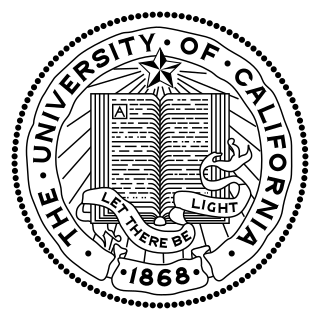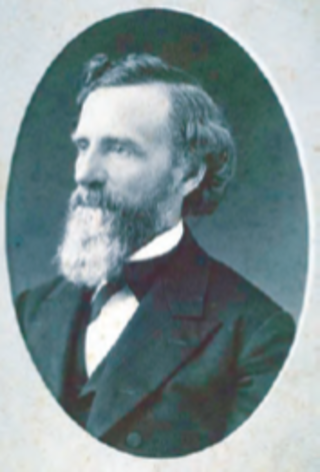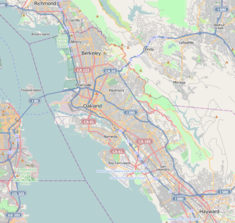
The University of California (UC) is a public land-grant research university system in the U.S. state of California. Headquartered in Oakland, the system is composed of its ten campuses at Berkeley, Davis, Irvine, Los Angeles, Merced, Riverside, San Diego, San Francisco, Santa Barbara, and Santa Cruz, along with numerous research centers and academic abroad centers. The system is the state's land-grant university. Major publications generally rank most UC campuses as being among the best universities in the world. In 1900, UC was one of the founders of the Association of American Universities and since the 1970s seven of its campuses, in addition to Berkeley, have been admitted to the association. Berkeley, Davis, Santa Cruz, Irvine, Los Angeles, Santa Barbara, and San Diego are considered Public Ivies, making California the state with the most universities in the nation to hold the title. UC campuses have large numbers of distinguished faculty in almost every academic discipline, with UC faculty and researchers having won 71 Nobel Prizes as of 2021.

The University of California, Davis, is a public land-grant research university in Davis, California, United States. It is the northernmost of the ten campuses of the University of California system. The institution was first founded as an agricultural branch of the system in 1905 and became the seventh campus of the University of California in 1959.

The California State University is a public university system in California, and the largest public university system in the United States. It consists of 23 campuses and seven off-campus centers, which together enroll 457,992 students and employ 56,256 faculty and staff members. In California, it is one of the three public higher education systems, along with the University of California and the California Community Colleges systems. The CSU system is officially incorporated as The Trustees of the California State University, and is headquartered in Long Beach, California.

Clark Kerr was an American economist and academic administrator. He was the first chancellor of the University of California, Berkeley, and twelfth president of the University of California.

The Regents of the University of California is the governing board of the University of California (UC), a state university system in the U.S. state of California. The Board of Regents has 26 voting members, the majority of whom are appointed by the Governor of California to serve 12-year terms.

The University of California College of the Law, San Francisco is a public law school in San Francisco, California, United States. The law school was formerly known as the University of California, Hastings College of the Law from 1878 to 2023.

Henry Huntly Haight was an American lawyer and politician. He was elected the tenth governor of California from December 5, 1867, to December 8, 1871.
Samuel Merritt (1822–1890) was a physician and the 13th mayor of Oakland, California, from 1867 to 1869. He was a founding Regent of the University of California, 1868-1874. He was also a shipmaster and a very successful businessman; he died at age 68 with a reputation for being the most affluent man in Oakland.
The campus of the University of California, Berkeley, and its surrounding community are home to a number of notable buildings by early 20th-century campus architect John Galen Howard, his peer Bernard Maybeck, and their colleague Julia Morgan. Subsequent tenures as supervising architect held by George W. Kelham and Arthur Brown, Jr. saw the addition of several buildings in neoclassical and other revival styles, while the building boom after World War II introduced modernist buildings by architects such as Vernon DeMars, Joseph Esherick, John Carl Warnecke, Gardner Dailey, Anshen & Allen, and Skidmore, Owings and Merrill. Recent decades have seen additions including the postmodernist Haas School of Business by Charles Willard Moore, Soda Hall by Edward Larrabee Barnes, and the East Asian Library by Tod Williams Billie Tsien Architects.

Todd Alan Stadtman was an American singer, songwriter, musician, producer, author, blogger, and podcaster.
The California Pelican was a college humor magazine founded in 1903 by Earle C. Anthony at the University of California, Berkeley. Lasting eighty years, it was the first successful student humor magazine in UC Berkeley, though it was preceded by Smiles in 1891 and Josh in 1895. It is succeeded by the Heuristic Squelch, which is still running.
The history of the University of California, Riverside, or UCR, started in 1907 when UCR was the University's Citrus Experiment Station. By the 1950s, the University had established a teaching-focused liberal arts curriculum at the site, in the spirit of a small liberal arts college, but California's rapidly growing population made it necessary for the Riverside campus to become a full-fledged general campus of the UC system, and it was so designated in 1959.
Howard Kapnek Schachman was a graduate school professor in the Department of Molecular & Cell Biology at the University of California, Berkeley.
The history of the University of California, Los Angeles traces back to the 19th century when the institution operated as a teachers' college. It grew in size and scope for nearly four decades on two Los Angeles campuses before California governor William D. Stephens signed a bill into law in 1919 to establish the Southern Branch of the University of California. As the university broke ground for its new Westwood campus in 1927 and dissatisfaction grew for the "Southern Branch" name, the UC Regents formally adopted the "University of California at Los Angeles" name and "U.C.L.A." abbreviation that year. The "at" was removed in 1958 and "UCLA" without periods became the preferred stylization under Chancellor Franklin D. Murphy in the 1960s. In the first century after its founding, UCLA established itself as a leading research university with global impact across arts and culture, education, health care, technology and more.

This is a list of the National Register of Historic Places listings in Alameda County, California.
The history of the University of California, Berkeley begins on October 13, 1849, with the adoption of the Constitution of California, which provided for the creation of a public university. On Charter Day, March 23, 1868, the signing of the Organic Act established the University of California, with the new institution inheriting the land and facilities of the private College of California and the federal funding eligibility of a public agricultural, mining, and mechanical arts college.
John Harmon Charles Bonté (1831–1896) was a lawyer, Episcopal priest, and Secretary of the Board of Regents of the University of California from 1881-1896. He also held the offices of Land Agent, Superintendent of Buildings and Grounds, and Secretary of the Academic Senate. He was Professor of Legal Ethics at the University's affiliate, Hastings College of the Law. He worked tirelessly for the independence and advancement of the University for 15 crucial years in its early development.
The University of California, Santa Barbara (UCSB) traces its roots back to the 19th century, when it emerged from the Santa Barbara School District, which was formed in 1866 and celebrated its 145th anniversary in 2011. UCSB's earliest predecessor was the Anna S. C. Blake Manual Training School, named after Anna S. C. Blake, a sloyd-school which was established in 1891. From there, the school underwent several transformations, most notably its takeover by the University of California system in 1944.

Edward Tompkins (1815–1872) was an American lawyer. He is best known for endowing a chair at the University of California where he had been elected to the board of regents.

Drawing Building, also called the Naval Architecture Building, is a historical building in Berkeley, California. The Drawing Building was built in 1914. The building and it site was listed on the National Register of Historic Places on November 18, 1976. The Drawing Building was designed by architect John Galen Howard. The Naval Architecture Building is on the University of California Berkeley and is part of Blum Hall Complex, or Richard C. Blum Hall, completed in 2010, after Richard C. Blum. In 2004 the Naval Architecture Building was seismically updated, also a new three-story wing was built, desigened by Gensler Architects. The Blum Hall houses the Blum Center for Developing Economies. In the past the building housed the architecture department, including architect Julia Morgan, who worke on Hearst Castle.









